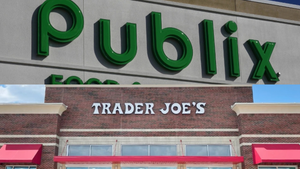4 Ways to Drive Traffic to the Meat Counter4 Ways to Drive Traffic to the Meat Counter
Here are four consumer habits and how they can help build a more effective meat marketing plan.
June 25, 2018

Consumer preferences when food shopping are changing, and for producers of any product — meat included — the tactics for attracting buyers are changing as well. In order to gain more sales, retailers have to address what consumers want, which includes things like name-brand familiarity, great customer service and more. To help shape store strategy for getting more customers to purchase meat, tapping into some of those consumer preferences and exploring the different facets of what makes someone choose to buy something is crucial.
Of course, to tap into those consumer preferences, retailers have to know what they are. Here are four consumer habits and how they can help build a more effective meat marketing plan.
1) Spotlight name brands but branch out.
According to a report from Sealed Air’s Food Care Division, “Top Findings of the Power of Meat 2018,” outright brand preferences in both fresh and processed meats have reached their highest points in
12 years, and shoppers overall say they’re inclined to purchase a familiar brand. Other purchase drivers include perceived better quality, value and consistency.
This means that if consumers aren’t familiar with a meat brand, it’s important to make that connection. Sixty-two percent of shoppers say that promotions can drive them to try a brand they don’t normally purchase, so consider branded promotions to boost sales and encourage trial. For instance, Tyson Fresh Meats offers a number of branded products that customers know and love, including Open Prairie® Natural Angus, Chairman’s Reserve® Prime Pork and more.
2) Incorporate excellent customer service into marketing.
With an increasing focus on all things digital, many consumers prefer to do their own research on what to buy, but in the grocery store, a human element is still welcome. According to Sealed Air’s report, 38% of shoppers say they would value a customer service associate in the meat case to offer tips or serving suggestions and guide them on how much to buy.
Additionally, 70% of shoppers say they value a full-service counter, even if their regular purchases just come from the meat case. Having help on hand is a great way to boost brand awareness and get shoppers excited about a new product they haven’t tried or one they may not know about.
3) Call out attributes about sourcing, raising, animal welfare and environmental factors.
Increasingly, consumers are concerned with where their food is coming from and how it’s produced. For meat producers, that spells opportunity — special attributes (including claims of all-natural, organic, grass-fed, hormone-free and antibiotic-free) saw dollar gains of 4.8% and volume growth of 5.1% over 2017, while conventional meat packages stayed flat, according to the Sealed Air report. For operators looking for viable options, Open Prairie® Natural Pork from Tyson Fresh Meats is a great option — with no antibiotics, no added hormones and minimal processing, it’s a tasty, all-natural pork product. For meat and poultry sellers, claim awareness has the highest positive impact on whether shoppers will purchase these items — be sure to call it out on packaging, and consider highlighting it in promotional materials as well.
4) Consider consumers’ families and needs.
One common shopper suggestion, according to the “Power of Meat” report, is greater variety. Stores should offer different pack sizes (ranging from just one or two portions to a family-sized package); different cuts (42% of shoppers say they would branch out from what they regularly purchase if advised/if a customer service associate suggested it); and specialty items. As younger consumers increasingly have families to feed, others remain child-free and don’t find enough value in purchasing large quantities, so it’s crucial to offer options. As for specialty items, marinated meat selections with unique or global flavors can do well, as consumers are interested in trying out new tastes.
When designing what will be a successful meat marketing campaign, it’s paramount to keep consumer preferences in mind. Other things to consider include advertising on multiple channels — print, digital and mobile — as well as convenience (as consumers are busier than ever, ready-to-eat and heat-and-eat products can be popular). For shaping effective meat marketing initiatives, manufacturers, producers and retailers should think of who’s buying the products and how to best reach them.
You May Also Like





